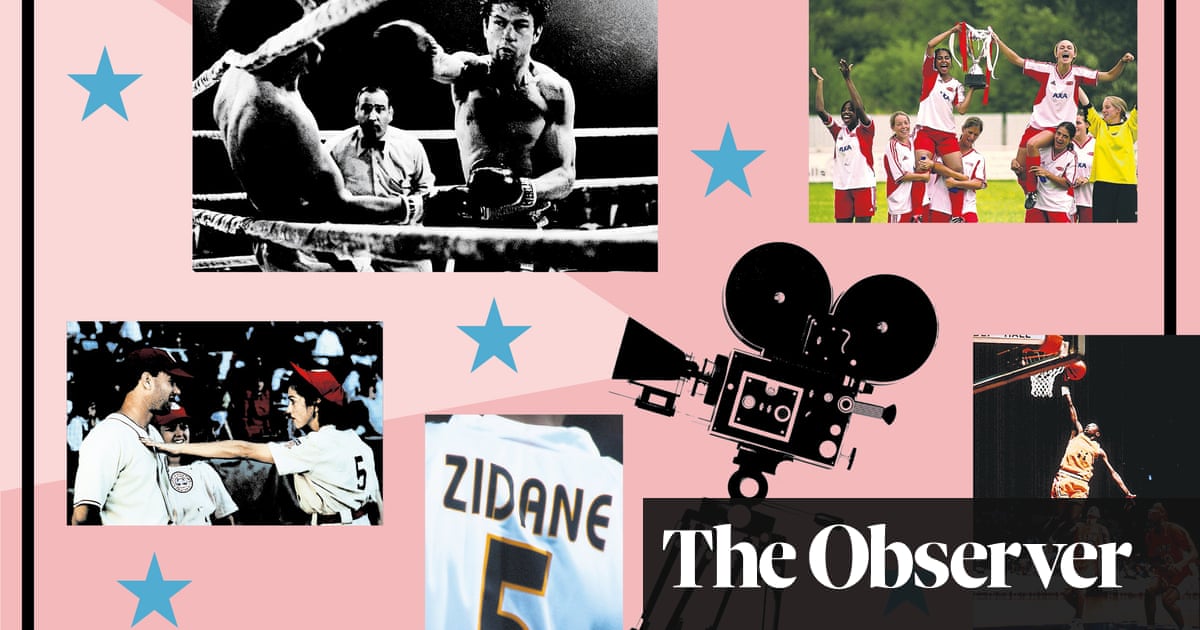
Like many men studying Emma Raducanu’s victory at the US Open, one writer found himself focusing on one particular part of her body – her “athletic frame”, as the former table tennis champion Matthew Syed called it.
“I’ve just been looking at photographs of Emma Raducanu again, this time focusing on her upper chest,” Theo Hobson, a theologian, wrote in the Spectator. He had spotted the player wore a cross. It interested him deeply. “To what extent is it legitimate to inquire into this?”
To an incredible and unlimited extent! The sparkly cross, along with earrings and a bracelet, was placed there by the jewellers Tiffany, precisely for millions of viewers to notice it, as Hobson did, in the final. This company, long established but recently consumed by the French LVMH luxury goods conglomerate, has now appointed the brilliant Raducanu its “house ambassador”, for a sum assumed to be enormous. “I wore the ring, bracelet, earrings and cross necklace throughout the tournament,” Raducanu said, when the deal was announced last week. “These pieces will always be very special to me.”
But identical pieces are also, happily, available on the Tiffany website. Should Hobson want the £2,750 “cross pendant” in 18k gold with “round brilliant diamonds”, it is still for sale online, though of course meeker price points are available. What about a heart-shaped Tiffany keyring, one that “evokes timeless elegance”, for £175?
That Raducanu should now, joining Tracee Ellis Ross and Anya Taylor-Joy, have a key role in displaying and marketing Tiffany’s wares on behalf, ultimately, of LVMH’s owner, Bernard Arnault, the world’s third richest man, was last week celebrated as an honour hardly less dazzling than her tennis title. For that, after all, she only had to practise for thousands of hours, with parents she has described as “very tough to please”. To win the Tiffany deal, she needed to be the sort of tennis champion who could manifest, 48 hours after winning, at the Met gala; the kind of 18-year-old who is slurped over by commentators, courted by Anna Wintour, and also, only intensifying the echoes of ingenues pursued in Henry James novels, by Wintour’s transatlantic rival, Vogue’s Edward Enninful.
Fashion magazines, such as Grazia and Elle – “Just when you thought Emma Raducanu’s year couldn’t get much better” – were willing to parrot PR drivel about the “Tiffany family”, as the company calls the celebrities, also including Beyoncé and Jay-Z, currently considered worth their hire by an old brand with its eye on younger customers. One campaign featuring denim jackets and called “Not Your Mother’s Tiffany” does appear to have had some success in depicting this arm of LVMH as edgy. Happily, most of this target audience is unlikely to remember some disparaging comments made about the then 16-year-old Greta Thunberg by Arnault. Thunberg’s approach, Arnault complained in 2019, “has a demoralising side to it for young people. She’s not proposing anyway, aside from criticism.” For his part, Arnault, then aged 70, hoped to show that the market in Veblen goods, whose appeal resides in their artificially inflated prices, could nonetheless be sustainable.
There is speculation following Raducanu’s appearance at the Met gala in an amorphous contraption by Chanel that another Veblen ambassadorship is in sight. Either way, the player’s half-Chinese, half-European heritage, along with her youth, prodigious talent and charm, could have been designed to make her the saviour of any elderly luxury brand trying to find a way back from the pandemic. Environmental concerns that Arnault would probably find demoralising have only added to the difficulties confronting the luxury industry when consumers are unable either to visit shops or to parade their chosen brands. Is a brand in private, unrecognised by even one other awed adept, even a brand?
But the miracle of Raducanu coincides with other signs that luxury buying may have emerged from the pandemic in better shape, thanks to financially unscathed patrons with yet more money and time on their hands than the humbler kind. Some brands, such as Chanel, simply raised their prices. Raducanu’s jewellery deal, announced at a British Vogue-Tiffany fashion week party, arrived at a time when even the generally unlamented it-bag seems to have risen, judging by fashion week reports, from the dead, untouched by both sustainability and any post-pandemic chat about values.
For all that the Tiffany deal reflects and rewards Raducanu’s personal achievement, its actual purpose – gilding the profits and reputation of this LVMH component – looks less obviously worth celebrating. Reputationally, outside the luxury industry and its dependent magazines, it even looks a bit one-sided. Tiffany/LVMH gets to inject her radiance and youthful but still blissfully apolitical energy into a range of bling that hasn’t looked that interesting, even to mothers, since the 80s. Raducanu gets tons of money, free jewellery hire and, with this early descent to the sulphurous realms of How To Spend It, alliance with a company whose CEO, though hostile to her contemporary Thunberg’s “doom-mongering”, has been less keen to judge Donald Trump. Opening an LVMH factory, Trump told Arnault: “I could learn something from you about branding.”
As for honour: Tiffany was happy to be associated, before Raducanu came along, with Kendall Jenner, even after the Kardashian star appeared in a sensationally misconceived Pepsi advert. There are worse faults, of course, for a heritage brand than a Kardashian association, which predated LVMH’s acquisition of Tiffany. Raducanu, both of whose parents work in finance, will be quite capable, along with her reportedly illustrious agent, of setting the financial security of the Tiffany deal against the possible disadvantages – to her – of this rapid transformation from unbranded newcomer into a luxury goods emissary, never not accessorised with something stupidly expensive. The latest pair of earrings cost £37,000. If it’s premature to interpret this deal as endorsing the LVMH family’s undeviating commitment to conspicuous consumption, it’s also hard to see it as anything else.
Catherine Bennett is an Observer columnist












